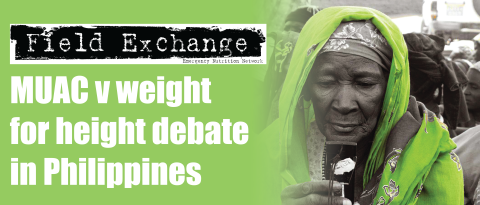infoasaid: communication in emergencies

When an emergency strikes, be it natural disaster or man-made, organisations working on the ground, together with the national authorities, rush to respond. Their actions are orientated towards getting in supplies, arranging logistics, and ensuring programmes such as Water, Sanitation and Hygiene (WASH), Health, Shelter and Nutrition can deliver on their commitments. Two-way communication, i.e. the sharing and receiving of information, with disaster-affected communities should and can be a cross-cutting part of humanitarian response and in itself, a form of aid.
Communication is essential to successful emergency programming in many ways. It can alert the population about the disaster and raise awareness on potential threats and thus mitigate risk. If it is two-way, it can improve programming by being more needs-based; if done well and effectively, it can improve coverage overall and at the same time, reach more vulnerable people. It can support the coordination effort by creating the space and the means for organisations and communities to work and talk together. It can also be an important and effective tool in addressing the psycho-social needs of a population who have experienced a disaster first hand.
infoasaid is a 2 year, DFID-funded project that is being implemented by two media development organisations - Internews and the BBC World Service Trust. The overall goal of the project is to improve the quality of humanitarian responses by maximising the amount of accurate and timely information available to both humanitarian agencies and affected populations through enhanced information exchange between them in the critical first few days and weeks of an emergency.

The project has two main objectives:
- To strengthen the capacity and preparedness of aid agencies to respond to the information and communication needs of crisis affected populations.
- To partner with a number of aid agencies to help inform and support their communications response in a variety of emergency contexts.
In order to achieve objective one, infoasaid is developing a range of tools that will be available to the entire humanitarian community. These include:
- Media and Telecoms Landscape Guides for 22 of the world's most disaster and conflictprone countries. These guides provide a comprehensive picture of the media and telecommunications landscape, information on media consumption patterns and a useful contact directory of media and telecoms operators. The guides are a practical tool for aid agencies to refer to when deciding which channels of communication to use in order to access different populations.
- A library of generic messages and accompanying guide. This has been developed in collaboration with a number of different clusters/sectors in humanitarian response, including WASH, Health, Nutrition, Food Security Protection and Education. The messages aim to provide information to affected populations about the scale and nature of the emergency, risks and threats and how to mitigate them and information about programme interventions. The accompanying guide explains the importance of context, culture, and delivery methods in each emergency situation. The messages are designed to be used as a reference tool and ideally, should be translated, piloted and adapted to suit the local context and to ensure comprehension before an emergency has occurred. The message library will soon be available for use in the form of a web based tool.
- Generic questions on information needs and access which need to be adapted and then integrated in agencies’ needs assessment frameworks.
- An interactive e-learning course to raise awareness of, and provide basic skills on, communicating with disaster affected communities. The two hour module takes the learner through a number of different emergency scenarios.
In order to achieve objective two, infoasaid is partnering with a number of aid agencies to help inform and support the integration of communications into their emergency programmes. Partnerships have been signed with Save the Children, Merlin, World Vision, ActionAid and the International Federation of the Red Cross and Red Crescent Societies (IFRC). infoasaid is currently piloting an intervention with Action Aid in Kenya around food security, using two new open source software platforms - Frontline sms and Freedom Fone. Scoping missions are also taking place in north east Kenya and Puntland with Save the Children to see how integrating communication interventions can improve their emergency response.

infoasaid also provides additional support in the following areas:
- Context analysis (analysis of the media land scape)
- Undertaking information needs and access assessments
- Development of communications plans and strategies
- Development and dissemination of key messages to affected populations
- Linking aid agencies with media development organisations, the tech-community and the local media
- Piloting new technology innovations
- Design and roll out of small scale pilot projects
- Undertaking learning reviews post-response, in order to learn lessons and document good practice
infoasaid informs its advocacy efforts through its field based experiences and the learning gleaned through the reviews undertaken post response. infoasaid hopes to consolidate its learning in the form of a Humanitarian Practice Network (HPN) Paper that it will develop and launch in collaboration with the Overseas Development Institute (ODI) in mid-2012. infoasaid is also providing technical and financial support to the ‘Communicating with Disaster Affected Communities (CDAC) Network’ with the view to strengthen the Network and enable it to take forward the work that infoasaid is currently doing.
For more information on infoasaid visit: www.infoasaid.org or contact Anita Shah, Head of Project, email: anita.shah@infoasaid.org
Imported from FEX website


